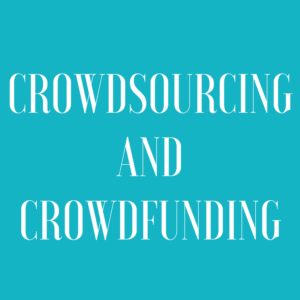There is a relative lack of awareness of the concept of crowdfunding. In the series of posts we start today, we’ll dive into the basics of crowdfunding. It’s very difficult to explain the concept of crowdfunding without first defining what is crowdsourcing. So let’s start from there. In this article, we’ll also see some of the many types of crowdsourcing (for a more comprehensive list, the Wikipedia post is quite a rabbit hole, you’ve been warned!)
According to the Merriam – Webster dictionary, crowdsourcing is the practice of obtaining needed services, ideas, or content by soliciting contributions from a large group of people and especially from the online community rather than from traditional employees or suppliers.
It is a relatively novel concept and it was only introduced in the dictionary in 2011!
Types of crowdsourcing
As the internet evolves, more and more types of crowdsourcing are developed and refined. Here are a few:
- Distributed knowledge: in this case, the crowd is used to gather information and knowledge on a certain topic. This could be done with citizen journalism, question and answers, etc. A great example of this was how a group of amateurs astronomers solved the mystery of an Aurora Borealis that wasn’t… And two more known examples are the Wikipedia and Quora
- Implicit crowdsourcing: Rather than users actively participating in solving a problem or providing information, implicit crowdsourcing involves users doing another task entirely where a third party gains information for another topic based on the user’s actions. A good example is reCaptcha: once users have been identified as humans by the Catpcha algorithm, they’re shown images and asked to classify them. Also, a lot of your internet behaviour is used by companies like Google to refine the behaviour of their Adwords.
- Microtasks: platforms like Amazon’s Mechanical Turk enable creators and companies to accomplish tasks that are easy for humans but still difficult for computers. This is achieved through a marketplace and automated thanks to an API.
- Open innovation and co-creation: companies can harness the creativity of their customer base to bring new innovation to the market. Big companies such as LEGO and Unilever have tapped into the crowd to drive their innovation programmes
- Distributed computing: volunteers lend their computers, specifically their idle processing resources, to solve complex problems such as protein folding and even the Search for ExtraTerrestrial Intelligence (SETI)
- Crowdfunding: in this case, creators and entrepreneurs seek the support from the crowd to finance an idea or company. In return, the supporters will usually get some type of reward or shares in the company. One of the first big campaigns was that of the first smartwatch, Pebble, that raised $10.3m between April and May 2012 in Kickstarter. A soft spot for me (due to my involvement in Crumbs Brewing) is the impressive equity raises that several breweries have managed, such as Northern Monk, Hop Stuff and the crowdfunding addict Brewdog.
Crowdfunding and Crowdsourcing
So, here we have it: crowdfunding is a type of crowdsourcing. In the next article of this series, we’ll see what are the main types of crowdfunding.
In the meanwhile, if you have any questions, feel free to comment or contact me.


Leave a Reply